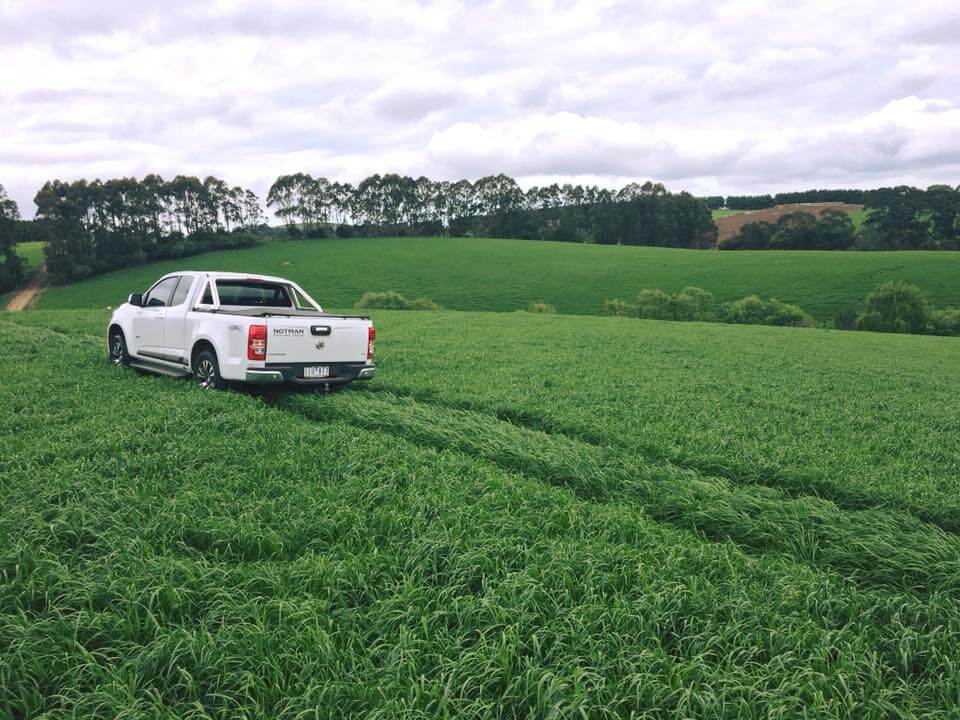It has been a particularly dry start to the year in the Western District – and that has led to sustained and heavily grazed paddocks and a reduction of feed options moving into Autumn.
To kick off the year Warrnambool recorded 29.2mm, 55% down on January-February average of 65mm. Terang recorded 36.8mm, 39% down on average 61mm. And Nullawarre recorded 48.4mm, 39% down on average 80.4mm.
In some cases pastures won’t bounce back, so increasingly demand has risen for cheaper, quicker, home grown feed that’s still coupled with high pasture quality and palatability.
The introduction of fast growing annual ryegrasses is a key component of many pasture programs especially whenever there is a need to bump-up production levels to increase extra supplies.
Under performing paddocks should be identified now and the option to produce early grazing feed and extra spring feed to conserve by planting annual ryegrasses should be seriously considered.
It’s crucial to sow as soon as those autumn rains arrive & there is warmth in the soil. Sowing at this stage is important to ensure those valuable feed supplies in early winter months are available.
Bullet Annual Ryegrass has been a proven performer in the Western District for farmers wishing to boost early home grown feed. With its superior speed of establishment, multiple grazings and excellent pasture quality provides a viable option.
Notman Pasture Seeds’ Andrew Allsop explains how tetraploid annual ryegrasses can be helpful in sustaining the growing demand for quick winter feed within six to eight weeks of sowing.
“Annual ryegrass variety Bullet has been bred specifically for quick establishment, and just as importantly, its ability to maintain quality all the way through to spring and early summer”.
“We’ve seen older varieties less respondent to nitrogen and late season rain events, and ultimately the farmer loses out for every dollar spent per hectare”
“Bullet has been a major success in the Western District for farmers looking at quality and fast establishing home grown feed options”
“Combining annual ryegrasses with balansa and shaftal clovers we are seeing late season quality hay and silage generated as well”
It was a particularly dry spring and summer season for farming — and in many cases that has led to quite heavily grazed paddocks, creating a reduction in feed options during the coming months.
For this reason, farmers are increasingly looking at cheaper and quicker options for animal feed during winter, making fast-growing, home-produced feed an increasingly viable option.
‘‘The cheapest form of feed available on-farm is what you grow yourself,’’ Andrew said.
‘‘Essentially, the cost per kilogram is much lower than from buying it in,’’ he said.
Home-grown feed is not only cheaper, it also gives farmers the option for multiple grazings during the growing season.
‘‘Bullet has been bred specifically for quicker establishment and later season growth’’ Mr Allsop said.
‘‘Animals are able to get on to the paddock within six to eight weeks of sowing, and it delivers strong late autumn and early winter feed — traditionally a time of year when feed can be in short supply.’’
For more information get in touch with Notman Pasture Seeds







